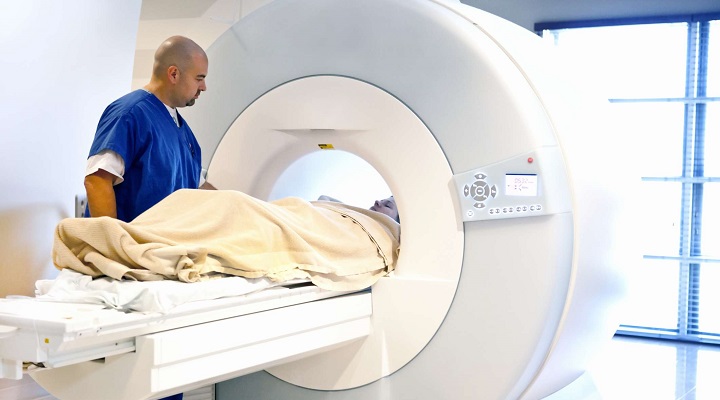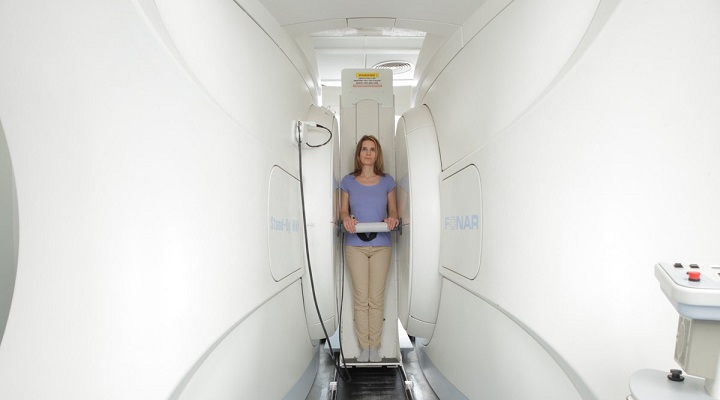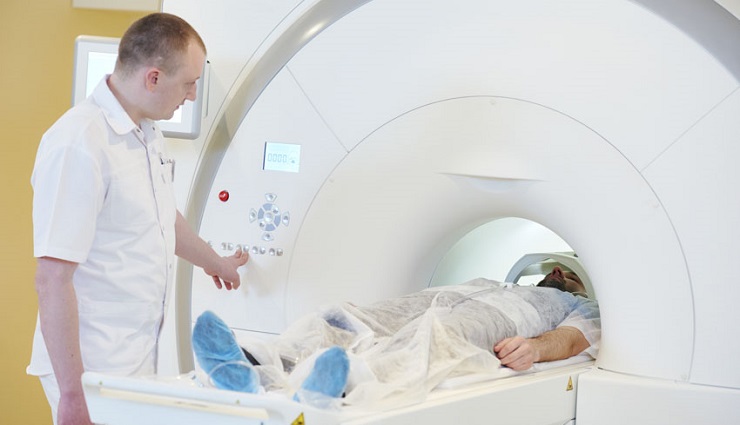Fear of MRA is a common complication caused by fear of closed spaces. Approximately 12.5% of people have this disorder, but most of their problems are never diagnosed. People who fear closed spaces become afraid of being in a secure or dark environment like an MRI machine. These people may also have signs of fear of suffocation. Sometimes MRA test is necessary for accurate diagnosis of diseases, so you should know how to treat the fear of MRA or know its alternatives. Stay with us until the end of this article.
What is the fear of MRI?
Fear of MRI is common, and MRI tunnel scanners can be very uncomfortable, as the patient must lie motionless in the tunnel for 15 to 90 minutes. Some people may even need sedation to keep them still during the test. MRA imaging is one of the most critical medical inventions of the last 30 years, but 2 million tests are not performed every year because patients cannot continue the test due to fear, and their lives are in danger.
What is the fear of closed spaces?
Fear of MRA is a kind of fear of closed space, Irrational fear of being locked in a confined environment. Although there is no real danger, the patient fears being restricted. Experts believe this condition is rooted in past incidents, such as being in a closed environment as a child, bullying, misbehavior, or having a parent with a fear of closed spaces. 1 out of 10 people is affected by this fear.
Some symptoms of fear of MRA and closed space are:
- rapid breathing;
- increase in heart rate;
- increased blood pressure;
- nausea;
- shaking;
- headache and dizziness, and confusion;
- dry mouth;
- Sweating;
- ringing in the ears;
- anxiety _
People with MRA fear usually do their best to avoid the conditions that cause these symptoms. Of course, this makes the fear stronger and severely limits their lifestyle.
How to minimize the fear of MRA?
1. Increase your knowledge about this test
If you know what to expect during an MRI scan, you can prepare yourself emotionally and psychologically. People who experience these conditions unexpectedly may have more severe symptoms. Ask your doctor to explain the details of the MRI and answer your questions. Although the details may vary, we have described the general process of the MRI test below.
1. Before scanning
Little preparation is required for an MRI scan, but you may need to avoid eating or drinking for a few hours before some scans. It is necessary to wear unique clothes and remove all metal objects and mobile phones. If you have metal prostheses in your body, you must inform the authorities before entering the MRI examination room. It is also necessary to fill out the MRA screening form so the MRA technician can check your health condition.
2. during scanning
The technician will ask you to lie on the examination table when you are in the MRI room. If your upper body is being scanned, your head should be towards the machine, and if your lower body is being reviewed, you should insert your feet into the machine first. Then the examination table slowly enters the MRI machine. After the scan starts, the device will make a loud rattling or clicking noise. These sounds are normal. The duration of the MRI is about 30 to 60 minutes. It would be best to remain completely still to make the image transparent during this time. Of course, you can talk to the technician about your concerns using the microphone inside the MRI machine.
3. After scanning
After the MRI, the radiologist reviews the images to ensure no more imaging is needed. After he approves the scan, you can go home. Your doctor will receive and discuss the test result with you at your next visit.
2. Know the MRI machine
Another way to prepare for this test is to learn about the MRI machine. This device uses strong magnets and radio frequency energy to produce precise, 3D images of organs and tissues inside the body. There are different types of MRI machines, but most of them are like a long loop. Of course, newer devices are shorter and broader to reduce people’s anxiety about closed spaces. The risk of an adverse event during an MRI scan is shallow.
3. Wear a blindfold
You may feel more relaxed with your eyes covered or closed. You may even be able to sleep, which is the most ideal position during an MRI. Take a blindfold with you or put a towel or a simple cloth over your eyes. By closing your eyes, you can induce the feeling of being in a familiar environment and reduce the feeling of being trapped.
4. Listen to relaxing music
Some MRI imaging centers provide headphones to help you relax with music. Music can distract you from being in a semi-closed environment. You can ask the technician to play your favorite music.
5. Use earplugs
If you prefer silence to music, you can use earplugs to silence the annoying sounds of the MRI machine. The MRI technician may provide earplugs before the scan, but you must request them.
6. Request a blanket

You may be able to ask the MRI technician for a blanket. Having a blanket during the scan makes you feel more secure and relaxed.
7. Focus on your breathing
According to research, calm and controlled breathing significantly reduces anxiety. It doesn’t matter whether you use simple breathing exercises, meditation, or prayer; any of these may help you relax during an MRI scan. Deep breathing increases the activity of the vagus nerve, which regulates the heart rate and the nervous activity of the intestines. When you feel anxious, your heart rate increases, and you may feel tight in your stomach. These symptoms are neutralized by stimulating the vagus nerve.
8. Take a trusted person with you
Maybe a room full of strange treatment staff will increase anxiety and distress. Knowing someone you know and trust is in the next room will make you feel less scared and stressed.
9. Ask your doctor for sedation
Medication is the only way to sedate you enough to tolerate an MRI in some situations. Sedatives are necessary if you are worried about having a panic attack due to the fear of closed spaces. To receive sedation during MRI, you must ask your doctor to prescribe it.
10. Request a comprehensive MRI scan
Wide bore MRA is a shorter and broader device and performs more expansive imaging. If your MRI clinic has this machine, you can ask the technician to use it for your scan. If you tell your doctor or technician you fear closed spaces, they will agree to your request for a comprehensive MRI.
MRA device alternatives
If you need an MRI scan but you feel that lying down in the MRI machine tunnel for a long time will cause symptoms of claustrophobia, you can look for a standing machine that allows you to have an MRI scan while standing or sitting. The Open or standing MRI does not require confinement and is a more pleasant experience. Open MRI handheld allows people afraid of MRI to talk to their companion or the technician during the scan.
This method is helpful for younger people who want to be with their parents and people with hearing problems or dementia who need support. Patients can also access television, as open MRI aims for a stress-free and relaxing experience. Available MRI devices are a stress-free alternative to tunnel MRI and provide comfort and relaxation for people afraid of MRI.
Advantages of open MRI

- Provides a weight-bearing image of the body: An open MRI scan can reveal problems not seen or underestimated by conventional MRI because it images patients in natural weight-bearing positions, including sitting, standing, flexing, or stretching. With this method, the effect of gravity on joints and soft tissues becomes more accurate. Imaging the spine in open MRA is done in the sitting position because, in this position, the spine is under five times the pressure of the lying part. This method helps better to diagnose spinal canal stenosis or lumbar vertebrae dislocation.
- More comfort for heavier patients: Open MRI scans are more comfortable for more severe and more extensive patients who cannot easily fit into a regular tunnel scanner, as these machines are built to support up to 226 kg of weight. Of course, the comfort level depends on the person’s physical structure and the location of the scan.
final word
The fear of MRI is caused by the disorder of fear of closed spaces and is completely normal. Many people suffer from this fear, sometimes leading to a panic attack. Since an MRA scan is prescribed to diagnose important diseases and will play an essential role in your medical care, you should try to reduce your fear by following some tips. Also, by informing the doctor, alternative ways or sedatives may be available.
Have you ever experienced fear in the MRI machine? Please share your experience with us.
Warning! This article is only for educational purposes; to use it, it is necessary to consult a doctor or specialist.v



